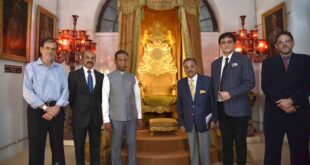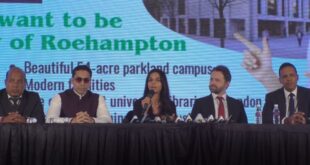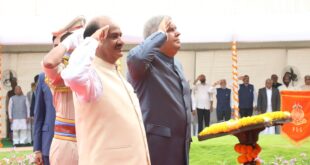Just in two days the protests against The Citizenship (Amendment) Act, 2019 have spread to many cities in the country. The protests which started in Assam after 4 December spread to West Bengal, Maharashtra, Karnataka, Delhi, UP and Bihar after 13 December.
Before we analyse the reason for such rapid spread of protests in the country, let’s have a brief look at what the CAB and NRC are?
What are CAB and NRC?
The 2019 Bill amends the Citizenship Act of 1955 to give eligibility for Indian citizenship to illegal migrants who are Hindus, Sikhs, Buddhists, Jains, Parsis and Christians from Afghanistan, Bangladesh and Pakistan, and who entered India on or before 31 December 2014. The bill does not include Muslims.
The National Registry of Citizens-NRC was a promise made in the Assam Accord to identify and deport foreigners. By the time it was published, it became evident that majority of those denied citizenship were Hindus or indigenous tribes.
The ruling BJP had promised in its 2014 election manifesto to provide a natural home for persecuted Hindu refugees. The travails of such refugees have since been reported in the Indian media on a regular basis.
Harish Salve, former Solicitor General of India, speaking in defence of the ruling government has said that the bill does not violate Article 14, Article 25 and Article 21 of the Constitution of India. He points out that Article 15 and Article 21 apply only to the entities, which reside in India, not to those, which want to enter India. Salve says that the bill doesn’t violate secularism and describes it as a ‘narrowly-tailored’ provision that is designed to address a specific issue.
The Amendment Act faced widespread criticism in India and abroad for being violative of the secular Constitution of India and its promise of equality under Article 14. Over 1,000 Indian scientists and scholars have signed a petition opposing the bill. The United States Commission on International Religious Freedom also criticised the Act. Some critics of the Act believe it legalises religious discrimination.
The BJP has on and off shown its resolve to apply National Register of Citizens (NRC) across India in order to identify citizens and “expel” illegal immigrants.
India’s previous citizenship law, Citizenship Act 1955, did not consider religious affiliation to be a criterion for eligibility. However, the new amendment specifically lists Hindus, Sikhs, Buddhists, Jains, Parsis and Christians from Afghanistan, Bangladesh and Pakistan as beneficiaries and exclusively misses out the Muslims.
Maybe this was done strategically to rouse Muslims anger. In just 9 months of its assuming power, the BJP has, one after the other raised issues like triple talaq, Article 370 and Ram Mandir in succession where the aggrieved party were obviously the Muslims. Though the Muslims didn’t lost their cool and handled every situation or development in a mature manner, yet the ruling party hell bent on vitiating the communal atmosphere of the country, presented the passage of the CAB as a victory for Hindus and showing the Muslims their place in the country.
Since the Muslims who were already perturbed by the handling of other three recent issues involving them, took the exclusion of the community in the CAB very seriously, took to the streets, but not just alone but with other communities.
Various posts on social media have already pointed out that if the NRC is implemented across the country then the plight of every citizen, be it Muslim or non-Muslim will be in peril, ultimately. Now what has happened is that not just the Muslims but every Indian has been able to see through the modus operandi of using these two acts in tandem, one will identify you as the one not possessing valid documents and the other one will declare you as a non-citizen on the basis of that.
So far, secular and Muslim outfits have spearheaded most of the protests, the government may try and did tried to create an atmosphere of fear and obedience by taking highhanded action against the protesters.
Two main centres for taking such exemplary action against the protesters could have been AMU and Jamia Millia. However, deft and mature handling by the SP of Aligarh city didn’t resulted in any massive crackdown against AMU students on the first day i.e. 13 December, but the police in Delhi acted in completely uncontrollable fury against the students on the first day of the protests on 13 December in Jamia, and on 15 December the police force entered the Jamia university campus without any permission from the university administration targeting students studying at the library and in their hostel rooms, besides people praying at the university mosque. Videos of police personnel helping some people in alighting a public transport bus and a person in civil clothes lathi charging helpless girl students and teargas shells being lobbed into the library are already circulating on the social media.
The Jamia incident created a ripple effect across the country, students of different universities across the country from Aligarh to Pondicherry to Mumbai to Kolkata to Kochi and elsewhere started protests against the police high handedness in Delhi.
These mass protests across the country prove one that students and the young generation of the country are in no mood to take things lying down. The protests proved once again like the Mandal Commission protests of the 80s that the young will not succumb to any pressure. The events have also cemented ones faith that no one can destroy the secular fabric of our country, and in spite of skullcaps dominating the videos of protesters, in reality a large-scale number of non-Muslims are joining the protests everywhere, in fact the first demonstrations in Assam were led by non-Muslims, because they can see through the game plan that after Muslims, Dalits and eventually other communities too will be targeted shortly.
Moreover, it is not just the educated class which is joining these protests, one could see people from all strata and all religions of the city joining the protests at Jantar Mantar on 14 December and this show the solidarity and unity of the common Indians, that they will stand shoulder to shoulder with one another and bolsters ones confidence that ultimately the secular and inclusive nature of the country will triumph.
The events have also proved once again that though you can win a majority in the legislature with just 31.5% of the peoples vote, yet however the remaining 54.5% of Indians are against these nefarious activities and will stand against any force set to destroy this great country.
 Gawah (The Witness) – Latest News, Current Affairs, Politics, Sports, Religion, Literature, Technology, Education, National, Local – Hyderabad Telangana India World Fearless By Birth, Pristine by Choice – First National Urdu Weekly From South India – Latest News, Breaking News, Special Stories, Interviews, Islamic, World, India, National News
Gawah (The Witness) – Latest News, Current Affairs, Politics, Sports, Religion, Literature, Technology, Education, National, Local – Hyderabad Telangana India World Fearless By Birth, Pristine by Choice – First National Urdu Weekly From South India – Latest News, Breaking News, Special Stories, Interviews, Islamic, World, India, National News





